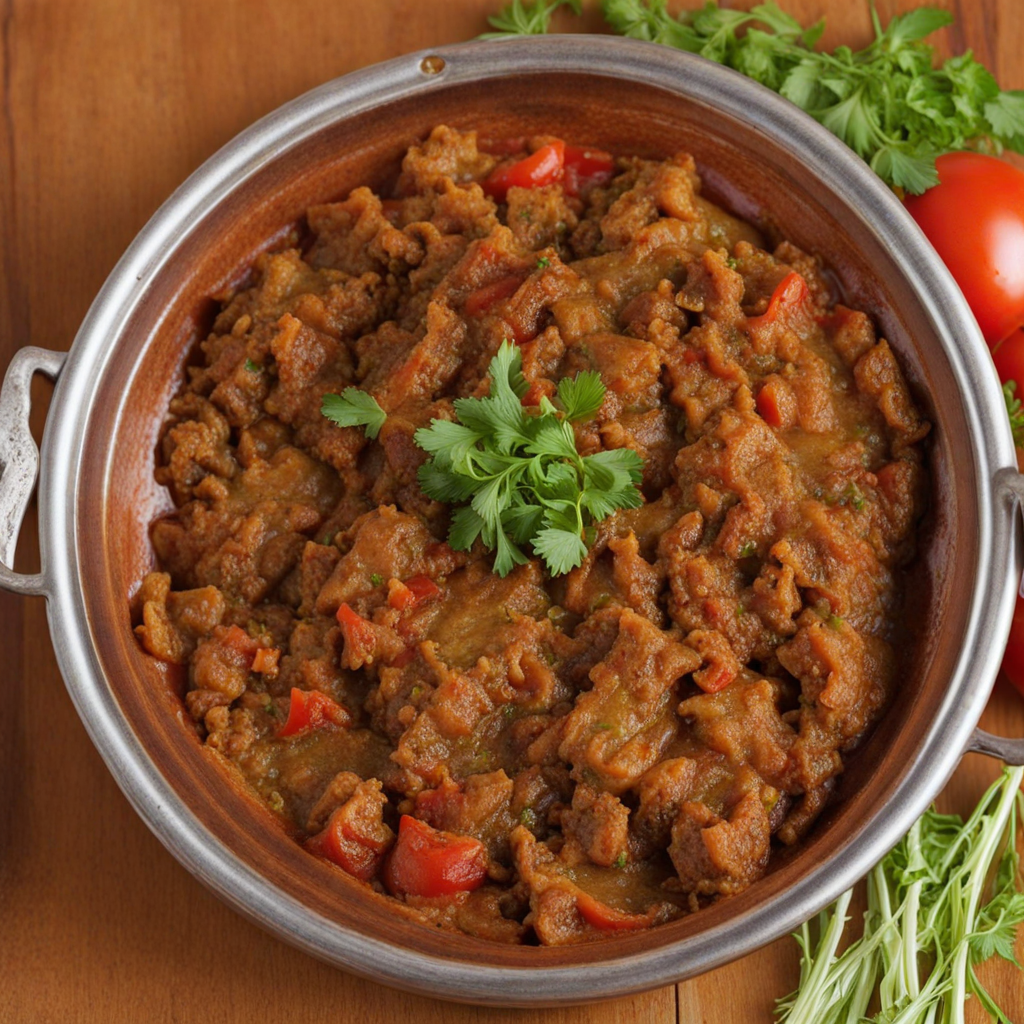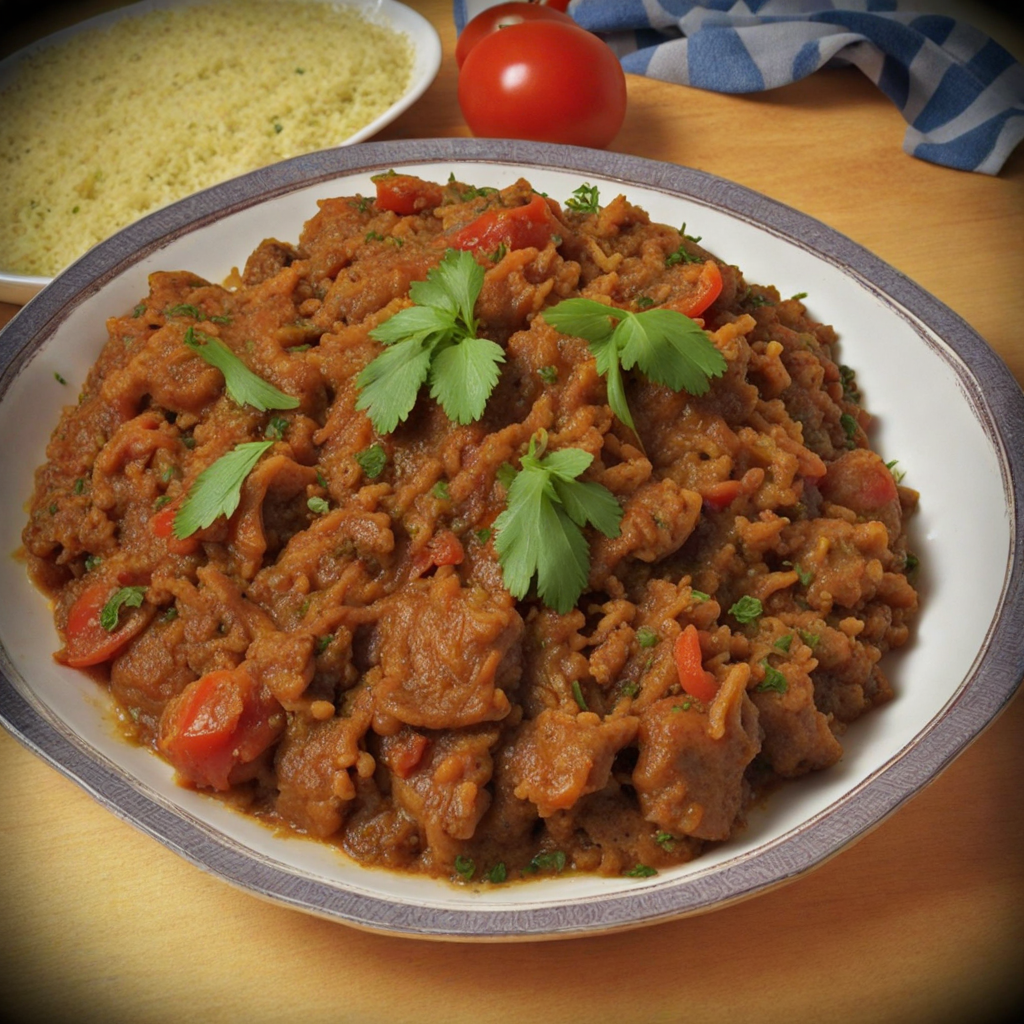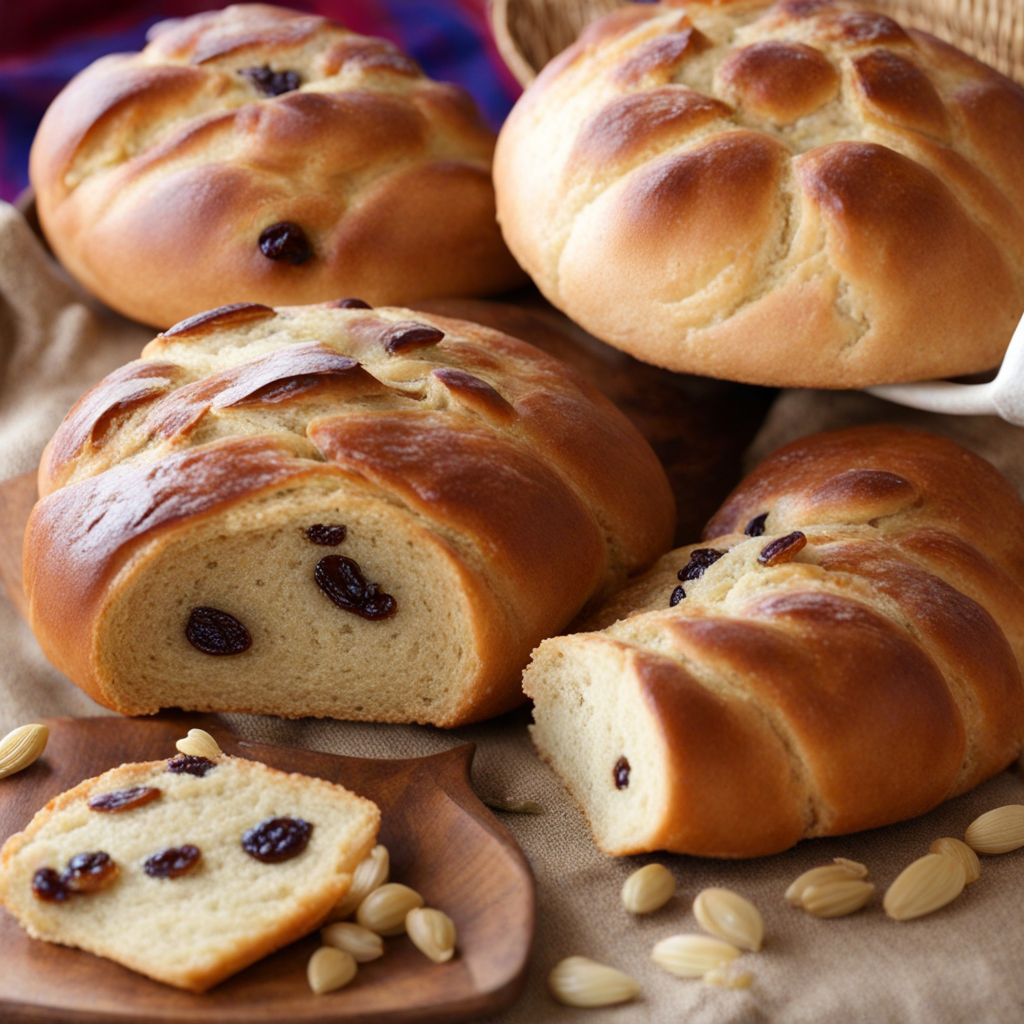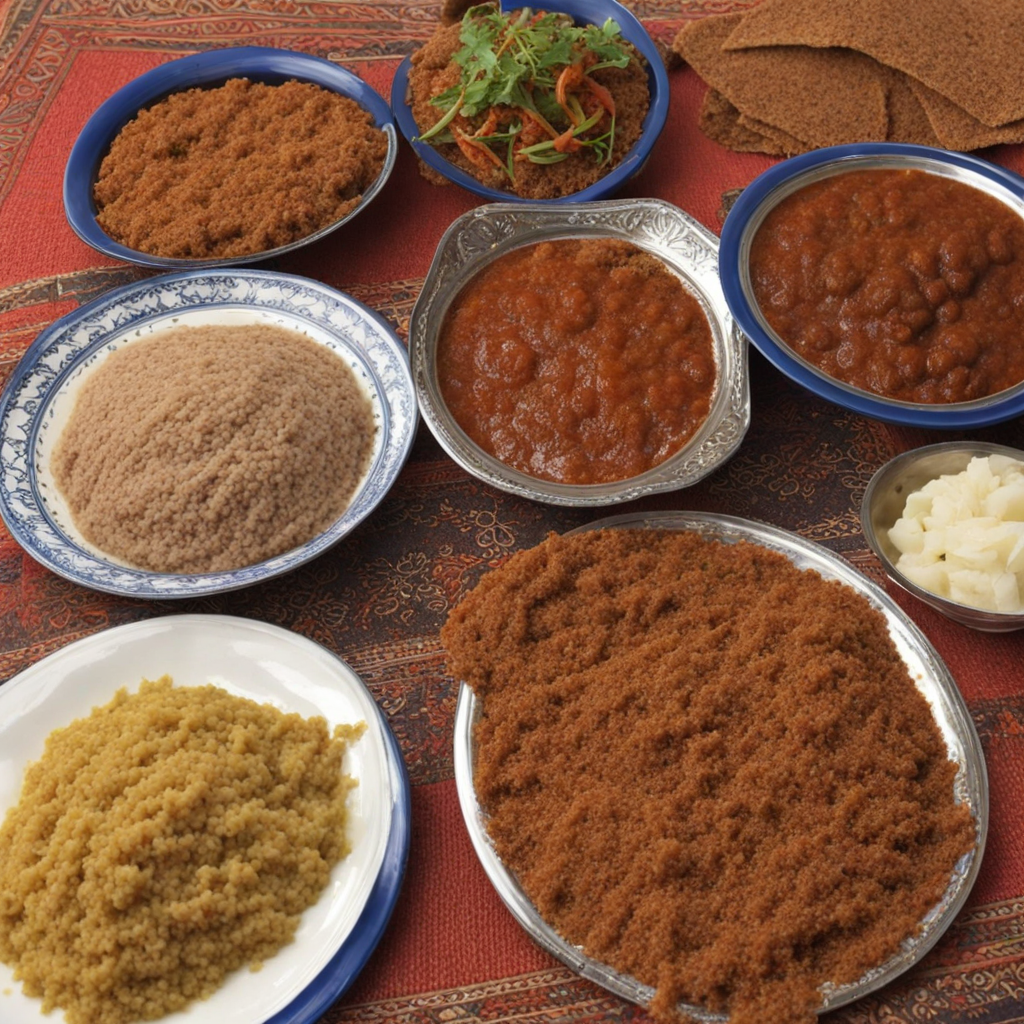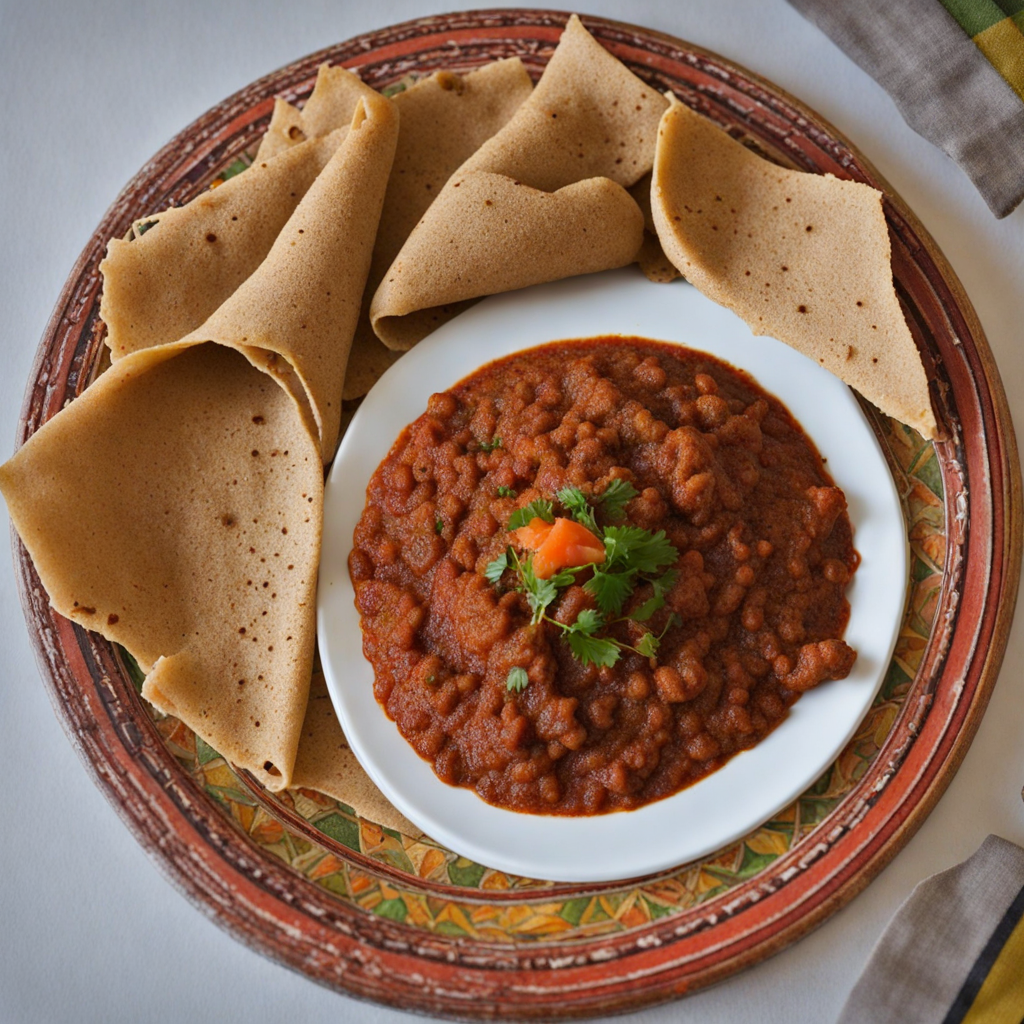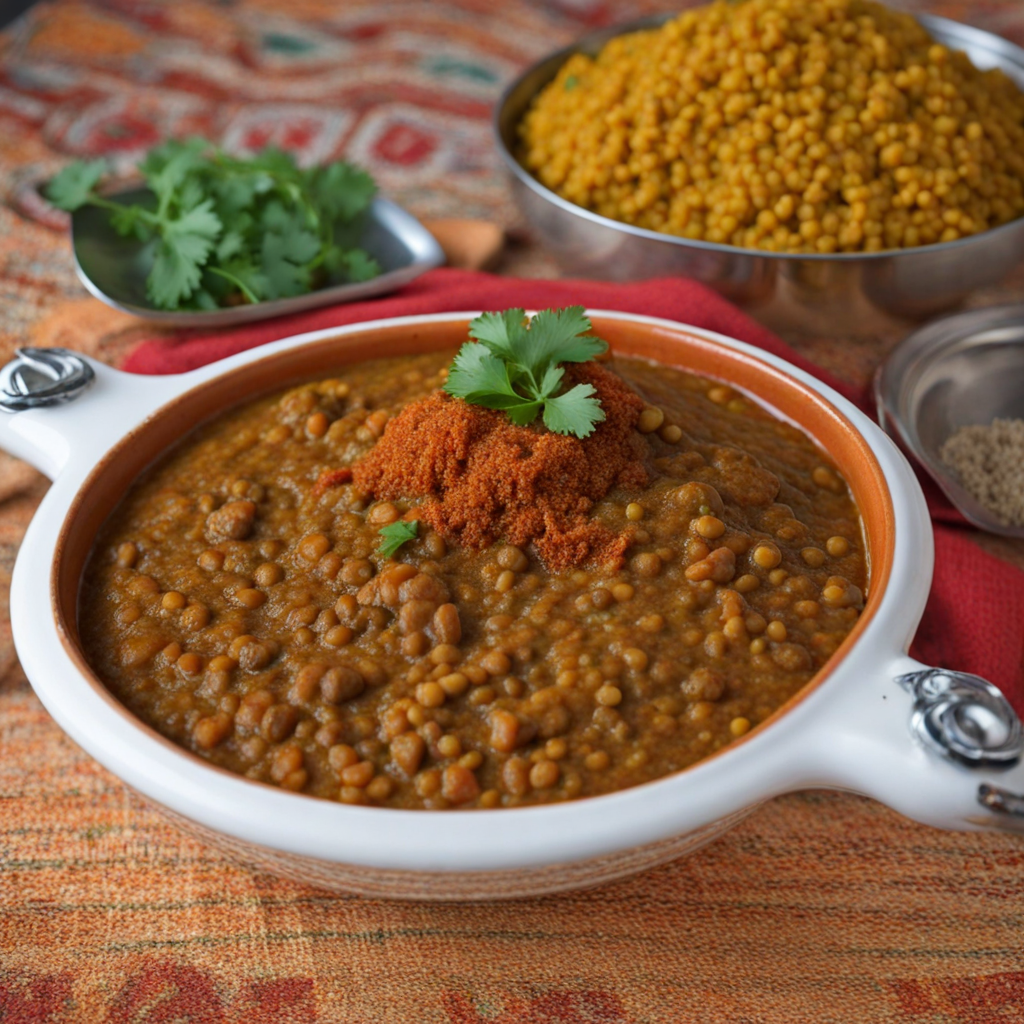Kulwa
Kulwa is a traditional Eritrean dish that tantalizes the taste buds with its unique blend of flavors and textures. This dish is often made using a base of finely ground grains, typically teff, which is a staple in Eritrean cuisine. The grains are fermented and then cooked to a soft, slightly tangy consistency, creating a deliciously hearty foundation. The texture is somewhat similar to a thick porridge or a soft bread, allowing it to pair beautifully with various accompaniments, enhancing its overall appeal. What sets Kulwa apart is the vibrant array of spices and ingredients that accompany it. Traditionally, it is served with a rich sauce made from a medley of vegetables, lentils, or meat, seasoned with berbere—a quintessential Eritrean spice blend that brings a warm, earthy heat to the dish. The combination of spices not only adds depth but also evokes the warmth and hospitality of Eritrean culture. Each bite is a delightful fusion of flavors, showcasing the country’s agricultural bounty and culinary heritage. As you explore Kulwa, you’ll find that it is often enjoyed communally, served on a large platter from which everyone can share, emphasizing the importance of togetherness in Eritrean dining. The dish is typically accompanied by fresh salad or spicy condiments, allowing for a customizable experience to suit individual palates. Whether you’re savoring the comforting taste of the grain or reveling in the complex spicing of the sauce, Kulwa presents a wonderful opportunity to experience the rich culinary tapestry of Eritrea.
How It Became This Dish
The Enigmatic History of ቁልዋ: Eritrea’s Culinary Treasure #### Origins At the heart of Eritrea’s rich culinary tapestry lies ቁልዋ (pronounced 'kulwa'), a traditional dish that serves as both a gastronomic delight and a cultural symbol. The origins of ቁልዋ can be traced back to the diverse communities that have inhabited Eritrea for centuries, including the Tigrinya, Tigre, and Saho peoples, each contributing to the dish's unique character and flavor profile. The base of ቁልዋ is typically made from a variety of grains, with wheat and barley being the most common. These grains were cultivated in the fertile highlands of Eritrea, where agriculture has been practiced for millennia. The art of making ቁልዋ involves transforming these grains into a fermented dough, which is then shaped into dumplings or balls. The fermentation process not only enhances the flavor but also serves as a preservation method, allowing communities to store food for extended periods. The dish itself is commonly enjoyed during significant cultural and religious events, showcasing its importance not just as sustenance but as a communal experience. It is often served with an array of stews, such as 'zighni' (a spicy meat stew) or 'shiro' (a chickpea-based sauce), making it a versatile companion to numerous dishes. #### Cultural Significance In Eritrean culture, food is deeply intertwined with social rituals, and ቁልዋ occupies a central place in these gatherings. It is a dish that symbolizes hospitality and community, often prepared in large quantities to be shared among family and friends during festivals, weddings, and other celebrations. The act of making ቁልዋ can itself be a communal affair, with women gathering to prepare the dough, share stories, and strengthen social bonds. Moreover, ቁልዋ is often associated with Eritrean identity. The dish reflects the agricultural practices and culinary traditions of the region, showcasing the resilience and adaptability of the Eritrean people. The fermentation process, a hallmark of many traditional cuisines around the world, highlights the ingenuity of the Eritrean communities in utilizing local resources to create a staple that is both nourishing and culturally resonant. In the context of Eritrean history, ቁልዋ has also played a role in the country’s struggles. During the long fight for independence, food became a means of preserving cultural identity and resisting colonial influences. The act of preparing and sharing traditional dishes like ቁልዋ served as a reminder of home and heritage for many Eritreans in exile. #### Development Over Time As Eritrea moved through different historical phases, including Italian colonization in the late 19th and early 20th centuries and subsequent conflicts, the preparation and consumption of ቁልዋ evolved. The Italian influence introduced new ingredients and cooking techniques to Eritrean cuisine, leading to a fusion of flavors. Although the core components of ቁልዋ remained unchanged, the accompanying stews and sauces began to incorporate Italian herbs and spices, enriching the overall culinary experience. In more recent years, globalization has further impacted the preparation and presentation of ቁልዋ. With the advent of the internet and the increasing popularity of Eritrean cuisine worldwide, traditional recipes have been adapted to cater to modern palates and dietary preferences. For instance, some contemporary chefs have experimented with gluten-free grains, such as millet or teff, to create alternative versions of ቁልዋ, appealing to a broader audience while still honoring its roots. Yet, despite these adaptations, the essence of ቁልዋ remains intact. It continues to be a dish that brings people together, evoking feelings of nostalgia and cultural pride. The preparation of ቁልዋ is still often a labor of love, with families adhering to traditional methods passed down through generations, ensuring that the flavors and practices of the past endure. #### The Modern Culinary Scene In Eritrea today, ቁልዋ can be found at various eateries, from street vendors to upscale restaurants. As the diaspora has expanded across the globe, Eritrean cuisine has gained recognition, with ቁልዋ being featured in Eritrean restaurants in cities like Washington D.C., Toronto, and London. These establishments often highlight the traditional aspects of the dish while also incorporating contemporary twists to attract a diverse clientele. Culinary festivals celebrating Eritrean food and culture have also emerged, providing a platform for chefs to showcase their interpretations of ቁልዋ alongside other traditional dishes. These events emphasize not only the flavors but also the stories and heritage that accompany each recipe, fostering a greater appreciation for Eritrean cuisine among both locals and visitors. #### Conclusion The journey of ቁልዋ from its ancient roots to its modern iterations is a testament to the resilience and adaptability of Eritrean culinary traditions. This dish embodies the spirit of community and hospitality, serving as a bridge between the past and the present. Whether enjoyed in a bustling market or at a family gathering, ቁልዋ remains an integral part of Eritrea's cultural fabric, offering a delicious glimpse into the country’s history and identity. As we continue to explore the diverse landscapes of global cuisine, the enduring legacy of ቁልዋ reminds us of the power of food as a universal language, capable of telling stories, forging connections, and celebrating the rich tapestry of human experience. In every bite of ቁልዋ, one can taste the history, resilience, and unity of the Eritrean people, making it not just a meal but a cherished cultural artifact.
You may like
Discover local flavors from Eritrea


